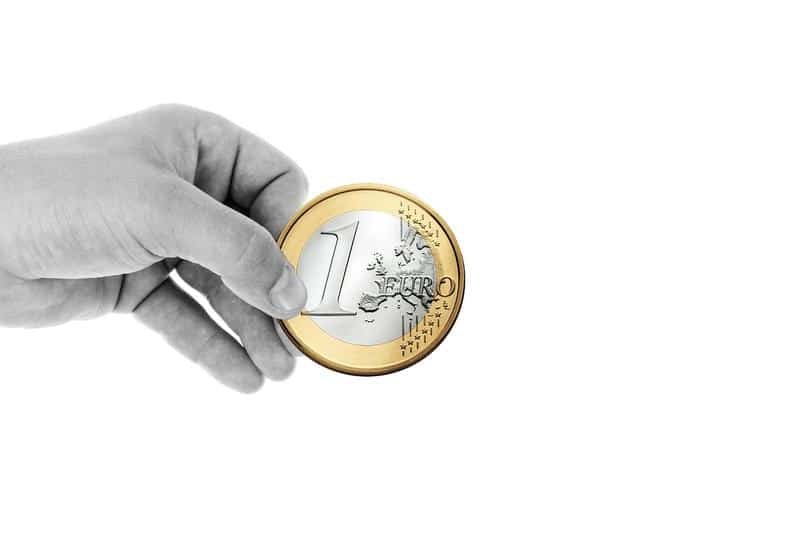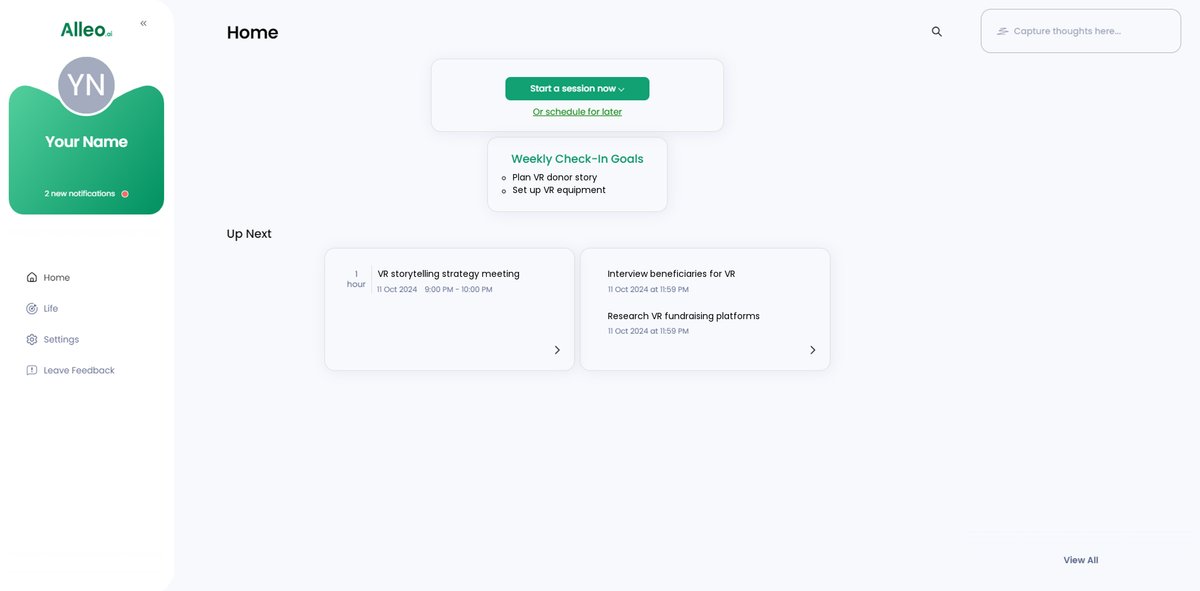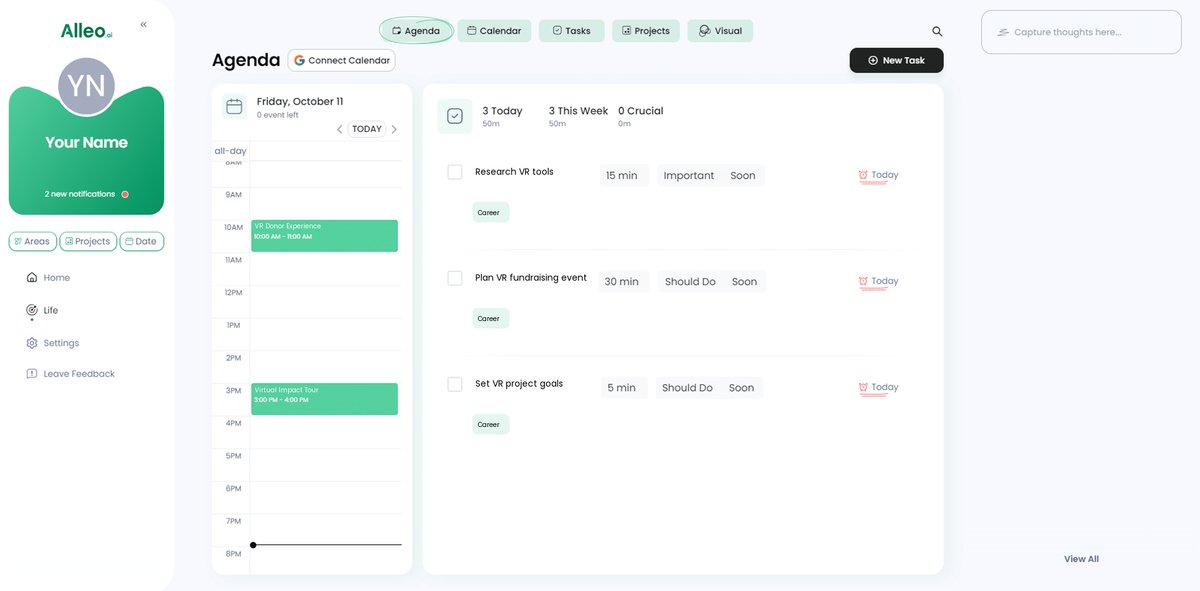5 Powerful VR Strategies for Nonprofit Marketers to Transform Donor Storytelling
Imagine if your donors could walk through the villages their dollars are transforming or feel the palpable excitement of a classroom they’ve helped build through immersive donor experiences.
As a coach for nonprofit leaders, I’ve helped many navigate these challenges. In my experience, leveraging emerging technologies like VR for nonprofit donor storytelling can make a significant difference in emotional engagement through VR.
In this article, you’ll discover how VR can revolutionize donor storytelling. We’ll explore strategies to enhance engagement and drive donations using virtual reality in nonprofit marketing and interactive virtual tours for donors.
Let’s dive into VR storytelling techniques for charities.

Understanding the Challenges in Donor Engagement
Engaging donors is harder than ever. Traditional media often fail to create the deep emotional connections needed for impactful storytelling. VR for nonprofit donor storytelling offers a promising solution to this challenge.
Many nonprofits struggle to convey their mission’s urgency and impact. This gap makes it difficult to drive donations and sustain long-term support. Virtual reality in nonprofit marketing can help bridge this gap effectively.
In my experience, VR offers a promising solution to this problem. By immersing donors in the cause, VR can create powerful emotional connections through immersive donor experiences.
Imagine providing a virtual tour of a project site or simulating a beneficiary’s experience. These immersive experiences can foster empathy and drive engagement in ways traditional media cannot. VR storytelling techniques for charities can significantly enhance emotional engagement through VR.
Several clients report significant challenges with donor storytelling. They often find that emerging technologies like VR help bridge the gap and enhance their efforts. Interactive virtual tours for donors and 360-degree video fundraising are becoming increasingly popular in nonprofit VR case studies.
Strategic Approach to Leveraging VR for Nonprofit Donor Storytelling
Overcoming this challenge requires a few key steps. Here are the main areas to focus on to make progress in VR for nonprofit donor storytelling.
- Create immersive VR experiences of impact stories: Develop compelling VR narratives that highlight the impact of your projects, using virtual reality in nonprofit marketing to enhance emotional engagement through VR.
- Use VR for virtual tours of project locations: Create interactive virtual tours for donors of your project sites to provide donors with a firsthand view, leveraging VR technology for social impact.
- Develop VR simulations of beneficiary perspectives: Design VR storytelling techniques for charities that allow donors to experience the lives of beneficiaries through empathy-driven VR campaigns.
- Host virtual reality fundraising events: Plan and execute VR fundraising events that engage donors in immersive donor experiences, potentially incorporating 360-degree video fundraising.
- Incorporate VR storytelling in donor presentations: Integrate VR for nonprofit donor storytelling into your regular donor presentations and pitches, showcasing nonprofit VR case studies.
Let’s dive in!
1: Create immersive VR experiences of impact stories
Creating immersive VR experiences of impact stories is crucial for engaging donors on a deeper level through VR for nonprofit donor storytelling.
Actionable Steps:
- Develop compelling VR narratives that highlight the impact of your projects. Identify key stories that resonate with your mission and donors. Partner with VR content creators to produce high-quality VR experiences and interactive virtual tours for donors.
- Integrate these VR experiences into your donor communication strategy. Use VR headsets during donor meetings or events to showcase the experiences. Create a virtual library of impact stories accessible via your website, incorporating 360-degree video fundraising techniques.
Key benefits of immersive VR experiences:
- Enhanced emotional connection with donors through empathy-driven VR campaigns
- Increased donor engagement and retention using virtual reality in nonprofit marketing
- More effective storytelling of project impacts using VR storytelling techniques for charities
Explanation: These steps matter because immersive VR experiences can foster stronger emotional connections with donors, increasing engagement and donations through VR technology for social impact.
According to Revenue Marketing Alliance, VR storytelling significantly enhances donor interaction and retention.
Engaging donors through immersive stories can transform your fundraising efforts and drive long-term support, as demonstrated by nonprofit VR case studies focusing on emotional engagement through VR.

2: Use VR for virtual tours of project locations
Using VR for nonprofit donor storytelling through virtual tours of project locations allows donors to experience the impact of their contributions firsthand.
Actionable Steps:
- Capture 360-degree videos of your project sites for immersive donor experiences. Use high-quality VR software to create interactive virtual tours for donors with informational hotspots.
- Share VR tour links in email campaigns and on social media. Host live virtual tour sessions where donors can ask questions in real-time, leveraging VR technology for social impact.
Explanation: These steps matter because they provide a tangible connection between donors and the projects they support, enhancing emotional engagement through VR.
According to the Elevation Web, virtual tours can significantly boost donor engagement and participation.
Leveraging VR storytelling techniques for charities in this manner can foster greater empathy and drive increased donations.
Incorporating VR tours in your communication strategy bridges the gap, creating more meaningful donor relationships through virtual reality in nonprofit marketing.

3: Develop VR simulations of beneficiary perspectives
Developing VR for nonprofit donor storytelling through simulations of beneficiary perspectives is essential for fostering empathy and deeper engagement.
Actionable Steps:
- Conduct interviews with beneficiaries to understand their stories. Collaborate with VR developers to create realistic simulations based on these narratives, utilizing VR storytelling techniques for charities.
- Use the simulations at fundraising events and in digital campaigns. Encourage donors to share their VR experiences on social media to spread awareness and create immersive donor experiences.
Explanation: These steps matter because experiencing beneficiaries’ lives firsthand through virtual reality in nonprofit marketing can significantly increase donor empathy and engagement.
According to the National Education Association, VR is more effective in creating emotional connections than traditional media.
Leveraging VR simulations can transform your fundraising efforts and drive long-term support through interactive virtual tours for donors.
Incorporating beneficiary perspectives through VR for nonprofit donor storytelling can build stronger, more personal donor relationships and create empathy-driven VR campaigns.

4: Host virtual reality fundraising events
Hosting virtual reality fundraising events can significantly enhance donor engagement and create unique immersive experiences, leveraging VR for nonprofit donor storytelling.
Actionable Steps:
- Plan and organize a VR fundraising event: Choose a theme and format such as a virtual gala or interactive workshop incorporating VR technology for social impact. Promote the event through your donor network and social media channels.
- Enhance donor participation during the event: Use interactive elements like live polls, Q&A sessions, and VR demos. Provide incentives for donations, such as exclusive access to VR content or immersive donor experiences.
- Follow up with attendees: After the event, send personalized thank-you messages and updates on the impact of their contributions. Encourage feedback to improve future events and VR storytelling techniques for charities.
Elements of successful VR fundraising events:
- Engaging and interactive VR experiences
- Real-time donation tracking and goal updates
- Opportunities for virtual networking and 360-degree video fundraising
Explanation: These steps matter because VR fundraising events can foster deeper connections with donors by offering immersive and interactive experiences, utilizing virtual reality in nonprofit marketing.
According to Better World, such events can increase donor participation and drive higher donations through emotional engagement through VR.
Leveraging VR technology can transform your fundraising efforts and build long-term support, as demonstrated in nonprofit VR case studies.
Incorporating VR fundraising events into your strategy can significantly enhance donor engagement and drive impactful results, effectively measuring impact of VR donor stories.

5: Incorporate VR storytelling in donor presentations
Incorporating VR for nonprofit donor storytelling can significantly boost engagement and donations.
Actionable Steps:
- Develop VR content: Create VR content that aligns with your presentation’s objectives. Use VR headsets or mobile VR solutions to present immersive donor experiences.
- Measure impact: Collect feedback from donors on their VR experience. Analyze donation patterns before and after incorporating VR storytelling techniques for charities.
Tips for effective VR storytelling in presentations:
- Keep VR experiences concise and focused
- Provide context before and after the VR experience
- Offer alternative viewing options for accessibility
Explanation: These steps matter because virtual reality in nonprofit marketing can create powerful emotional connections, leading to increased donations.
According to the Nonprofit Learning Lab, integrating VR in presentations can enhance donor engagement and retention.
Engaging donors through VR technology for social impact can transform your fundraising efforts and build long-term support.
Incorporating VR for nonprofit donor storytelling into your presentations bridges the gap, creating more meaningful connections with your supporters.

Partner with Alleo on Your VR Journey
We’ve explored VR’s potential for nonprofit donor storytelling and engagement. But did you know you can work with Alleo to make this journey into virtual reality in nonprofit marketing easier and faster?
Here’s how:
Step 1: Set up goals and plan VR storytelling initiatives with Alleo.
- Use Alleo’s goal-setting features to outline and track progress on VR for nonprofit donor storytelling projects.
- Schedule milestones and deadlines for immersive donor experiences and VR content creation.
Step 2: Make data-driven decisions with Alleo’s analytics tools.
- Analyze donor engagement metrics and feedback to refine your VR storytelling techniques for charities.
- Use Alleo’s insights to optimize future 360-degree video fundraising efforts.
Alleo provides tailored coaching support for empathy-driven VR campaigns, just like a human coach. Enjoy full coaching sessions on VR technology for social impact and a free 14-day trial, no credit card required.
Ready to get started with interactive virtual tours for donors? Let me show you how!
Step 1: Log In or Create Your Account
To begin your VR storytelling journey with Alleo, log in to your existing account or create a new one to access our AI coaching tools and start planning your immersive donor experiences.

Step 2: Choose Your VR Storytelling Focus
Select “Setting and achieving personal or professional goals” to align your VR storytelling initiatives with your nonprofit’s objectives, helping you create more impactful donor experiences and drive engagement.

Step 3: Select “Career” as Your Focus Area
Choose “Career” as your focus area in Alleo to align your VR storytelling strategies with your nonprofit’s professional goals, enhancing your ability to engage donors and advance your organization’s mission through innovative technology.

Step 4: Starting a coaching session
Begin your VR storytelling journey with an initial intake session to discuss your nonprofit’s goals and create a tailored plan for implementing VR in your donor engagement strategy.

Step 5: Viewing and managing goals after the session
After your VR storytelling coaching session, check the Alleo app’s home page to review and manage the goals you discussed, allowing you to track progress on your nonprofit’s VR initiatives and donor engagement strategies.

Step 6: Adding events to your calendar or app
Schedule your VR storytelling initiatives and fundraising events in Alleo’s calendar feature, allowing you to easily track progress on your donor engagement goals and stay organized as you implement your new VR strategies.

Embrace the Future of Donor Engagement with VR
As we’ve explored, VR for nonprofit donor storytelling can transform how you engage and connect with your donors. It offers a unique way to tell your story and make a lasting impact through immersive donor experiences.
Imagine your donors feeling truly connected to your cause. Virtual reality in nonprofit marketing makes that possible.
So, why wait? Start integrating VR storytelling techniques for charities into your donor storytelling strategy today.
By doing so, you can build stronger, more personal relationships with your supporters through interactive virtual tours for donors. This can lead to increased donations and sustained long-term support.
And remember, Alleo is here to help. Try our coaching support and analytics tools for free. Let’s make your VR journey a success in creating emotional engagement through VR.